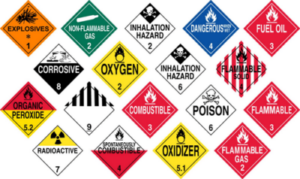Hazardous Waste-Container Labeling Requirements
December 1, 2020
Everything You Need to Know About Hazardous Waste-Container Labeling Requirements
Shakespearean quotes from Romeo & Juliet are notoriously absent from blogs about hazardous waste management Cannabis Hazardous Waste Disposal —which isn’t to suggest that today’s topic, “waste-container labeling requirements,” doesn’t have its romantic charm.
As you might recall, Juliet opines from her balcony in Act II, “What’s in a name? That which we call a rose by any other name would smell as sweet.” Thereby, she suggests that it doesn’t matter how or what you label something.
Bad call.
Such naivete forebodes that things aren’t going to end well in Act V, which they certainly don’t, and holds a lesson for anyone who thinks—as Bill the Bard might say— it matters naught how thee might wend about labeling hazardous waste containers.
What are the EPA and DOT waste labeling requirements?
By way of review, you can accumulate hazardous waste onsite (and without a permit) so long as you pay due attention to federal law 40 CFR Part 262, Subpart C. And there’s a potpourri of DOT requirements for marking hazardous-waste containers that you must be sure to address.
But in their trademark endearing way when it comes to hazardous waste disposal, neither the EPA nor DOT has official labels for doing so—not even a suggested format. That said, we’ve provided requirements specific to each agency.
Bear in mind, however, that both EPA and DOT rules tend to be moving targets. Our list of do’s & don’ts isn’t necessarily up-to-the-minute. So might we recommend you get the latest expert advice before you start writing on those hazmat barrels? But onward:
EPA labeling requirements for hazmat containers
Per the EPA, a container used for hazmat onsite storage must be marked with the words “Hazardous Waste.” It must also exhibit the starting date for its accumulation along with information about its contents (e.g., toxic, reactive, ignitable, or corrosive).
If you’re reusing a container, make sure to remove old labels. And whether new or used, make sure to place a label on a container the very first moment that hazardous waste is placed inside it. Otherwise, you’re out of compliance—and your intention to have done so at your very first convenience will not mollify a cranky EPA inspector.
To avoid visual confusion, all your personnel should be using the same labeling method (e.g. handwritten vs. printed forms). And each should have a clear understanding of what the markings signify—regardless of whether he or she directly tends to your hazardous waste disposal efforts.
Also bear in mind that labeling requirements differ depending on the amount of hazardous waste you generate. In this regard, the EPA specifies two categories: Bulk-packaging (see 172.301 here) and Non-bulk packaging (see 172.302 here).
Loosely speaking, non-bulk packaging dictates a maximum capacity of 119 gals. for a liquid waste (450 L); a maximum of 882 lbs. for a solid waste (400 kg); or a water capacity of 1000 lbs. for a gaseous waste (454 kg). Thereby, bulk-packaging is anything that exceeds these quantities.
As in all things involving the EPA, expert advice is crucial.
DOT labeling requirements for hazmat containers
There are also specific DOT requirements for hazardous material removal to offsite disposal, storage, or treatment.
Not only must the container be clearly labeled as hazmat, but it must also prominently display this notice: HAZARDOUS WASTE—Federal Law Prohibits Improper Disposal. If found, contact the nearest police or public safety authority or the U.S. Environmental Protection Agency.
Additionally, the container must clearly show your company’s name, EPA identification number, and manifest tracking number; and there might be additional requirements for bulk-packaging containers (see above).
Labeling must be durable, clearly visible, and written in English. It must be displayed on a contrasting color background and not be obscured by other labels, attachments, or advertising.
“Labeling” vs. “marking”
For DOT purposes, the word “labeling” is a very specific thing and is applicable only to bulk-packaging (see above). “Labels” are always diamond-shaped; and their size must adhere to international standards, measuring at least 4″ x 4″ (100 mm) on each side, square-on-point. Everything else (applicable to non-bulk packaging) is merely “marking.”
The DOT uses nine categorical HazMat labels:
- Explosives
- Compressed gas
- Flammable & combustible liquid
- Flammable & reactive solids
- Oxidizers & organic peroxides
- Poisonous materials & infectious substances
- Radioactive materials
- Corrosives
- Miscellaneous
Again—expert advice is crucial.
Summary
While neither the EPA nor DOT specify a format for labeling hazardous waste containers, each requires specific information to be prominently displayed.
You’re free to use commercially-available printed labels that accommodate handwritten data—or any other means—so long as you’re consistent and include the required information.
Alternatively, you can buy PC software that allows you to enter the required information and then print formatted labels with your desktop printer.
For more information, contact us today.
And thank you for reading our blog!

